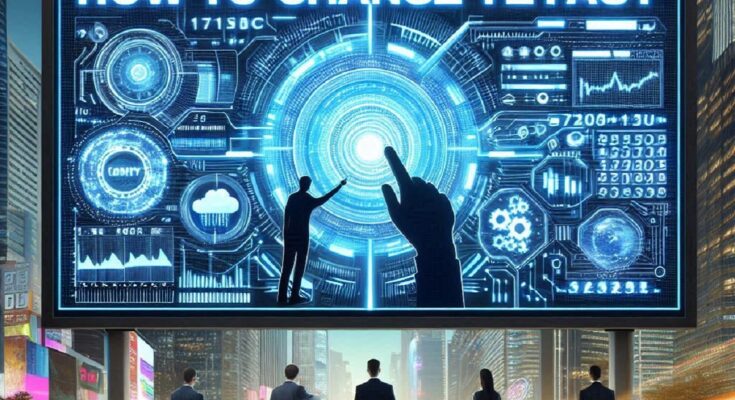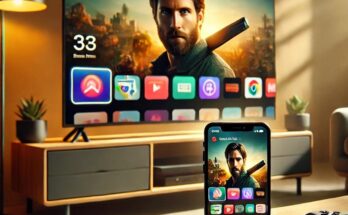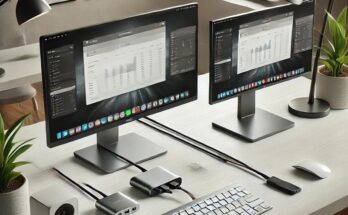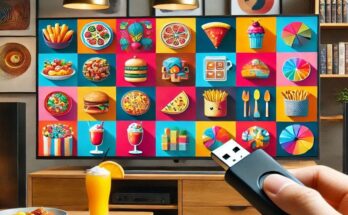LED display boards have become a ubiquitous sight, captivating audiences with their vibrant displays of text, graphics, and animations. But the true magic lies in their versatility – you can update the message on your display board in a flash! This guide delves into the various methods for changing text on your LED display board, empowering you to keep your content fresh and engaging.
Diving into Control Systems: The Heart of Text Updates
The method for changing text on your LED display board hinges on its control system. Here’s a breakdown of the common approaches:
-
Computer Software: Many LED display boards come with dedicated software for creating, editing, and scheduling text displays. This software often offers a user-friendly interface with features like drag-and-drop text placement, font selection, and animation tools. Imagine a visual playground where you can directly manipulate the text on a virtual representation of your display board, experimenting with colors, fonts, and effects before pushing the update live.
-
USB Flash Drive: Some LED boards offer a more streamlined approach, allowing you to update content via a USB flash drive. Simply prepare your text file or animation on your computer, save it to the flash drive, and then insert it into the designated USB port on the display board. The board will automatically read and display the updated content. Think of it as a convenient way to make quick changes without needing a computer connection.
-
Remote Control: For simpler LED displays, a remote control might be the primary method for text changes. This may involve navigating a menu system to input characters, choose pre-programmed messages, or adjust scrolling speed. While less flexible than software or cloud-based control, a remote control offers a user-friendly way to make basic updates on the go.
-
Cloud-Based Control (Advanced): Cutting-edge LED display boards leverage the power of cloud computing. These displays connect to the internet, allowing you to manage and update content remotely from any web-enabled device. Cloud platforms offer advanced features like scheduling, real-time updates, and integration with external data sources. Imagine managing your display board from the comfort of your couch or even while traveling – a true testament to modern technological advancements.
Identifying Your Control System
Consult your LED display board’s user manual or manufacturer’s website to determine the specific control system it utilizes. This information will guide you towards the appropriate method for changing text.
Unveiling the Methods: A Detailed Look
Once you’ve identified your control system, let’s explore the specifics of each method:
-
Using Software: Software typically provides a visual representation of your LED display board, allowing you to directly type and edit the text within the interface. You can choose fonts, colors, animation effects, and even schedule specific messages to display at designated times. These software programs often come with pre-loaded templates and animations to simplify the process.
-
Updating via USB Flash Drive: The process for updating content via a USB flash drive is usually straightforward. Prepare your text file or animation in a format compatible with your display board (consult the manual for specifics). Save the file onto a USB flash drive and insert it into the designated USB port on the display board. The board’s internal software should automatically detect the update and display the new content. Think of it as a plug-and-play method for quick updates.
-
Remote Control Text Changes: Remote controls for LED display boards typically offer a limited set of text editing options. You might have a keypad for entering characters, a selection of pre-programmed messages, and controls for scrolling speed and brightness. This method is suitable for basic updates like displaying greetings or announcements but may lack the flexibility of software or cloud-based control.
-
Cloud-Based Content Management (Advanced): Cloud platforms offer a powerful and convenient way to manage your LED display board content. Access your control panel from any web-enabled device, allowing you to update text, schedule messages, and monitor the display’s status remotely. These platforms might also integrate with external data feeds, enabling you to display real-time information like stock quotes, weather updates, or social media feeds. Imagine managing your LED display board from anywhere in the world, keeping your content dynamic and ever-changing.
Beyond the Basics: Additional Considerations
Here are some extra factors to keep in mind when changing text on your LED display board:
-
Character Limits: LED display boards have a finite number of LEDs, translating to a limit on the number of characters you can display. Be mindful of this limit when creating your messages, ensuring your content is concise and impactful.
-
File Compatibility: For USB flash drive updates, ensure your text file or animation format is compatible with your display board. Refer to the user manual for supported formats.
-
Scheduling and Rotation: Software and cloud-based control systems often allow you to schedule messages for future display and create dynamic content rotation.
These features elevate your LED display board beyond a static sign, transforming it into a powerful communication tool. Here’s how scheduling and rotation enhance your messaging:
-
Planned Content Delivery: Schedule messages for specific dates and times, ensuring your content is relevant and timely. Imagine automatically displaying promotional offers during peak business hours or congratulatory messages on birthdays or holidays.
-
Dynamic Content Rotation: Create playlists of messages, animations, or graphics that automatically rotate on your display board. This keeps the content fresh and engaging for viewers, preventing them from getting tired of seeing the same message repeatedly.
-
Automated Updates: Cloud-based systems can pull content from external sources like social media feeds or live data feeds, ensuring your display board always shows the latest information. Imagine displaying real-time stock quotes or weather updates without manually updating the content.
These scheduling and rotation features unlock a world of possibilities for your LED display board. Here are some creative applications:
- Retail Businesses: Showcase daily deals, upcoming sales, or product information. Rotate between advertisements and customer testimonials to keep viewers engaged.
- Public Spaces: Display real-time traffic updates, public transportation schedules, or emergency announcements.
- Events and Conferences: Display speaker information, session schedules, or live social media feeds to create a dynamic and interactive experience.
-
Additional Considerations
-
Scheduling Granularity: Software and cloud platforms might offer varying levels of scheduling granularity. Some might allow for precise time-based scheduling, while others might focus on date-based scheduling or recurring displays. Choose a system that aligns with your specific needs.
-
Content Creation Tools: Some platforms offer built-in tools for creating text displays, animations, or basic graphics. This simplifies content creation for users who might not have prior graphic design experience.
By leveraging scheduling, rotation, and other advanced features, you can maximize the impact of your LED display board, transforming it into a dynamic and versatile communication tool.




